Wonu Veys travelled to Australia as part of an international collaborative project entitled Globalization, Photography, and Race: The Circulation and Return of Aboriginal Photographs in Europe. She has worked extensively with the photographic collections found within the Musée du quai Branly, but more specifically with pictures from the Museum of Ethnology.
The following is a blog account of Wonu’s travels that have been translated from Dutch to English.
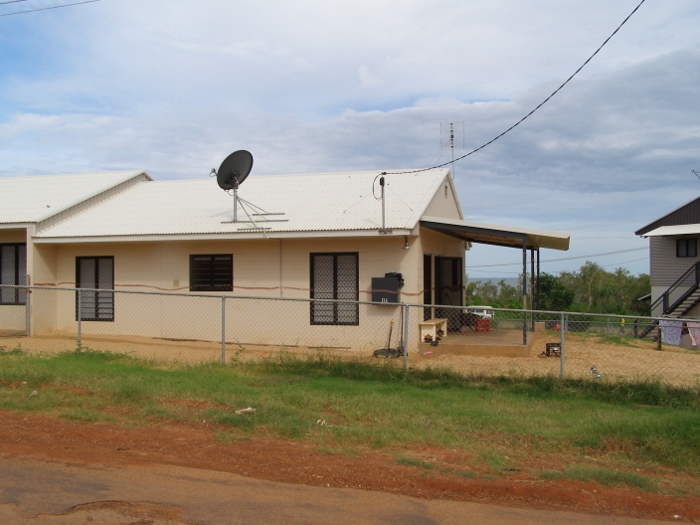
House of a man who passed away recently. The house has a brown-red line to indicate that it has been cleansed by a smoking ritual.
A quiet Sunday (Sunday, March 2nd, 2014)
Numbulwar is very quiet today. Sunday is the day of leisure for the locals, whether it be a picnic on the beach or fishing with the family. The men in the community specialize in spearfishing.
The morning is not filled with the sounds of singing from the church as many residents prefer to practice their beliefs in their own way when is comes to their Christian faith and religious beliefs. During my time spent in the community I often heard of those that had been affected by curses, which could only be lifted by a ‘smoking ceremony’. Community members took this very seriously.
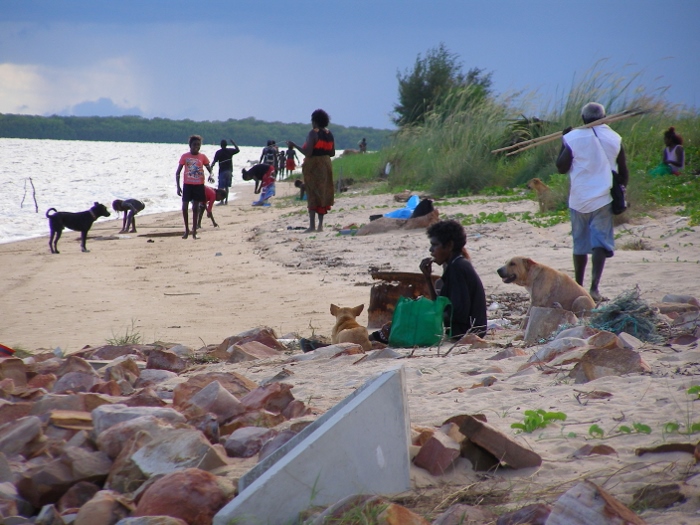
Sunday in Numbulwar: family picnic and fishing.
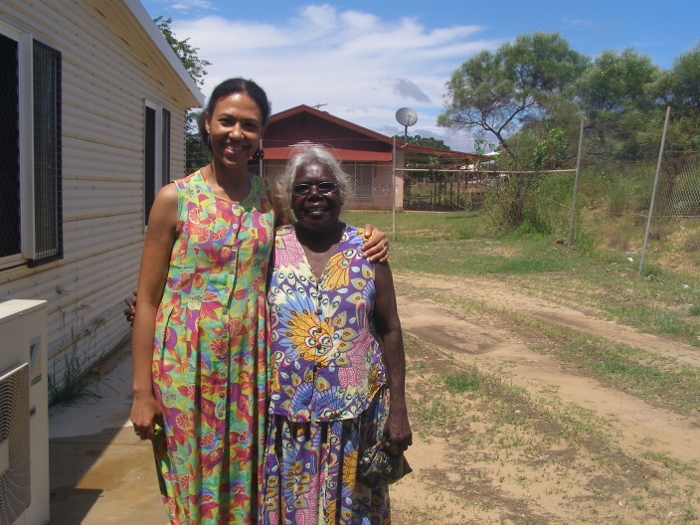
Farewell Jangu Nundhirribala
Yirrkala (Monday, March 3rd, 2014)
Today is my last day in Numbulwar. I say goodbye to the women who have helped me so much and will be taken to the small airport, which is extremely busy today.
My one-engine plane brings me to Gove Nhulunbuy or a settlement made rich by the bauxite mines. From here I drive about 17km from the airport with a two-wheel drive vehicle to Yirrkala.
Yirrkala lies in the heartland of the Yolgnu people, who played a crucial role since the 1960s in the struggle for Aboriginal land rights. Yirrkala is also an artistic epicenter. Hundreds of woodcarvings bark paintings; basket weaving and prints are offered for sale at art centers. Artists travel from afar to sell their works at the center.
While I was there I met a man who had brought in a bark painting of a yam plant. He told me that his wife had made it, and that he had brought it in to sell. When I asked if he was from the area, he replied yes, he lived at an outstation only three hours drive from Yirrkala. He claimed that he could even make the journey during the rainy season, although occasionally you may have to drive slower.
Artists can also create their artworks in the center itself; the best works are exhibited in the museum. In the performing arts, the Yolgnu people are very talented. For example, the Yolngu musician Geoffrey Gurrumul Yunupingu continues to entertain thousands of fans both within Australia and abroad with his ability to sing in both his traditional language and English.
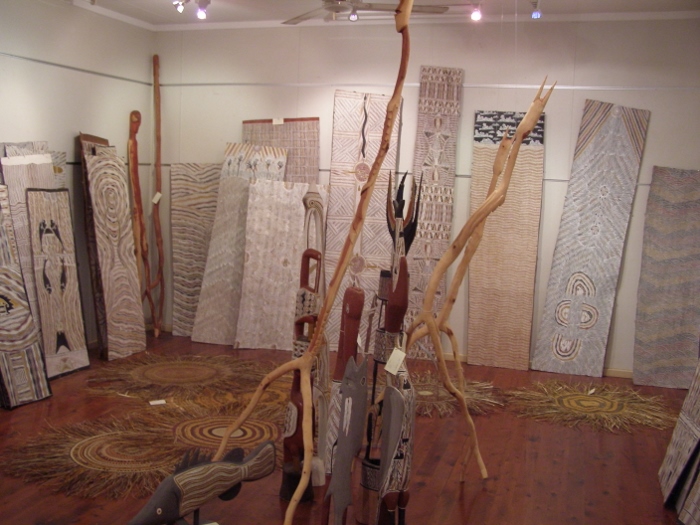
Artworks for sale

Ms. Wununmurra from Gurrumuru working on an artwork. She belongs to the Dhalwanu clan, the Narrkala group and the Yirritja-moiety.
The Mulka Project (Tuesday, March 4th, 2014)
Yirrkala is also home to ‘ The Mulka Project, which is a project that aims to protect and to help continue the cultural knowledge of the Yolgnu people. The organisation focuses upon the Yolgnu law, culture and governance with an aim to build an archive and make contemporary films. Young people participate actively.
During my stay in Yirrkala, young people were constantly coming in and out to practice their new choreography, which are often based on information found within old film stock, which had been stored with the Mulka Project.
The Mulka Project also provides computers so that community members can have access to the archives. One of these computers is connected to a small theater. As a result, I was able to watch a short film entitled, ‘Bayini’.
Bayini tells the story of a group of young people who do not listen to the warnings of an older man and still go to an island inhabited by a ghost. At important ceremonies community elders can contact the Mulka project to help assist in filming the events.
Tropical rain! (Wednesday, March 5th, 2014)
The day started with an impressive tropical rainstorm. Miraculously, by the time I was meant to fly by charter plane to Groote Eylandt there was almost no cloud to be seen on the horizon. On arriving however, it rained so hard that my scheduled flight to Darwin had to be delayed by four hours. So I had ample time to explore the airport.
As the name suggests, it is the Dutch who named Groote Eylandt in 1644 when Abel Tasman named the largest island in the Gulf of Carpentaria. Since the 1960s, Groote Eylandt has provided about a quarter of the worlds manganese supplies annually. The traditional owners of the island is the Warnindhilyagwa people whose language is probably very similar to the Wubuy spoken by Nunggubuyu from Numbulwar and their surrounding regions. It is certain that both groups share many rituals and family relationships. Groote Eylandt had centuries of contact with the Macassan traders from South Sulawesi each year to the shores of Arnhem Land looking for pearls and sea cucumber (trepang).
Eventually the five passengers (including myself) who were scheduled to fly to Darwin boarded the plane after slogging through five centimeters of water. The flight itself went without any problem.
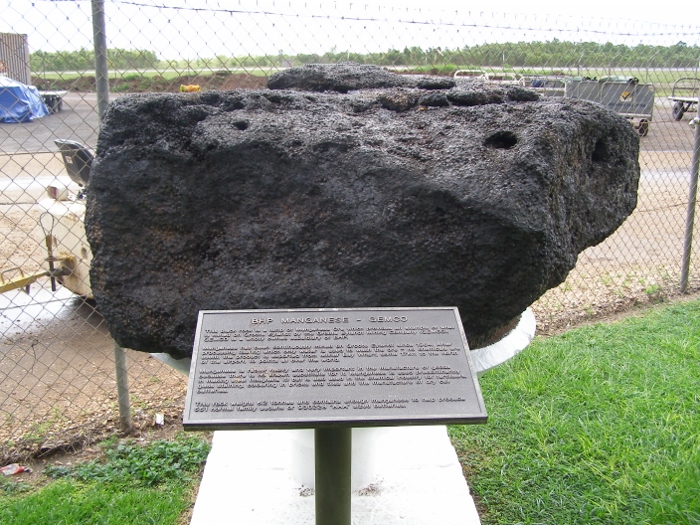
A manganese block from the mining company GEMCO
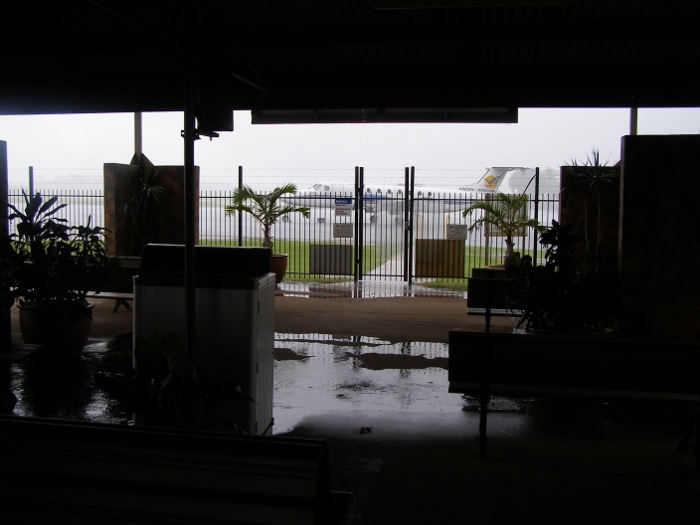
Wait until the tropical rain at the airport of Groote Eylandt passes
Library of the Northern Territory (Thursday, March 6th, 2014)
Before I take my flight to Perth, I had some time to find some literature about Numbulwar from the Northern Territory Library, which proved to be an excellent source of information. Many books that I have found are even harder to find in other parts of Australia, let alone in Europe.
One of the librarians referred me to the extremely practical website “Trove” from the National Library of Australia which compiles photos, newspaper articles, maps, journals and audio-visual material that can be found, and often can be consulted online.
Coincidentally, I noticed that there was a small exhibition about Paul Foelsche (1831-1914), the police officer who became famous for his photographs of Darwin and Aboriginal people from the area. We at the Museum of Ethnology have a small collection of photographs by Paul Foelsche.
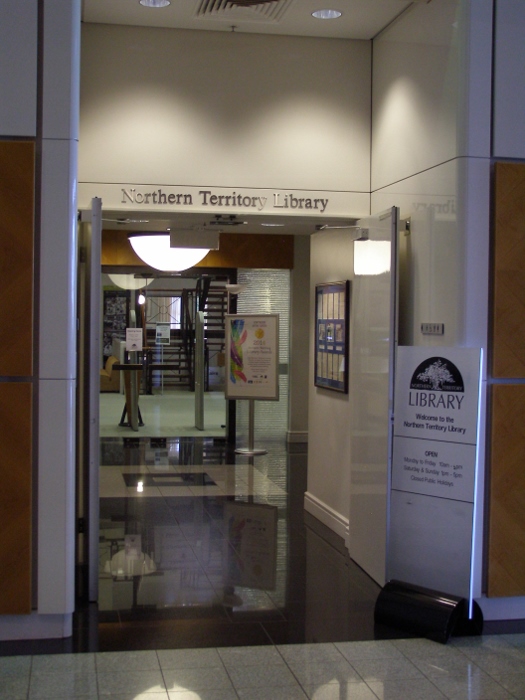
Entrance to the Library of the Northern Territory
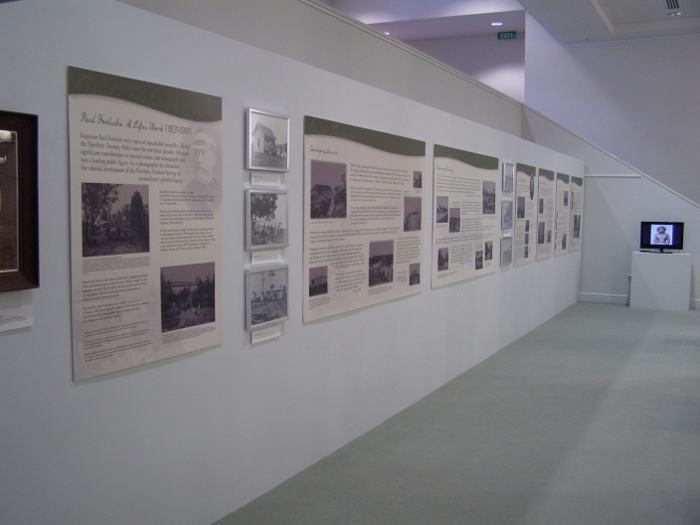
Paul Foelsche exhibition at the Library of the Northern Territory
Report of my research (Friday, March 9th, 2014)
Today I was to give an account and feedback of my research. Both the social sciences and the humanities were invited to my seminar.
How do you summarize a month’s worth of rich and valuable investigation into an hour? It was a friendly group of researchers and teachers who had a lot of questions about both the research on John Tunney pictures, collections in Leiden and the process of sharing the Alex van der Leeden pictures in Numbulwar.
A very nice end to my very enriching research trip in Australia! Many thanks to everyone who made this research trip possible!
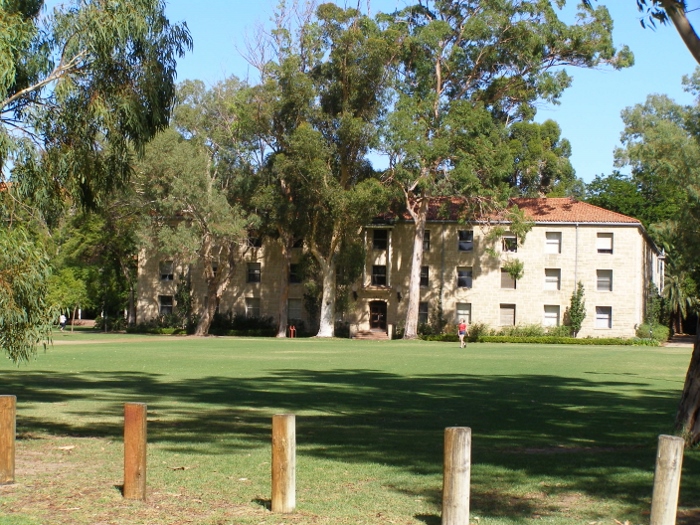
The ‘ Arts’ faculty of the University of Western Australia